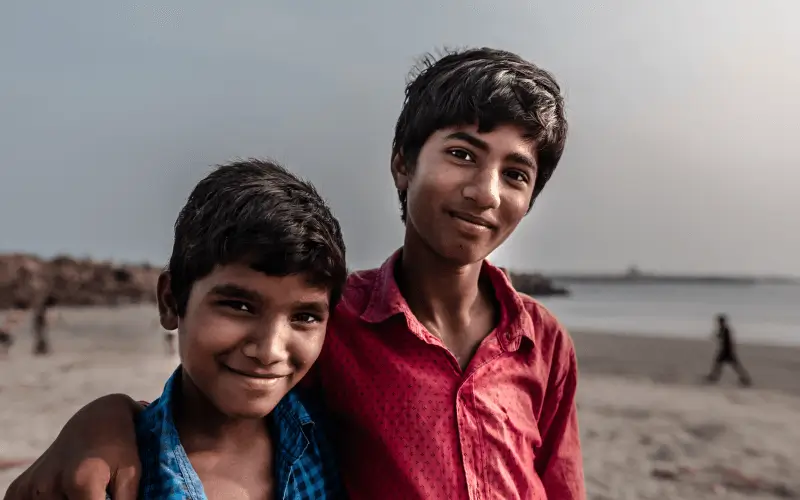Common Skin Diseases in Sri Lankan and Indian Skin Types
The skin type of an individual is mainly determined by genetics, although it will be affected by various different factors such as humidity, stress, hormones, natural ageing process and it may change with time as well. Based on these characteristics, there are five types of skin that can be categorised under healthy skin types. They are normal, dry, oily, combination of both dry and oily skin and sensitive skin.
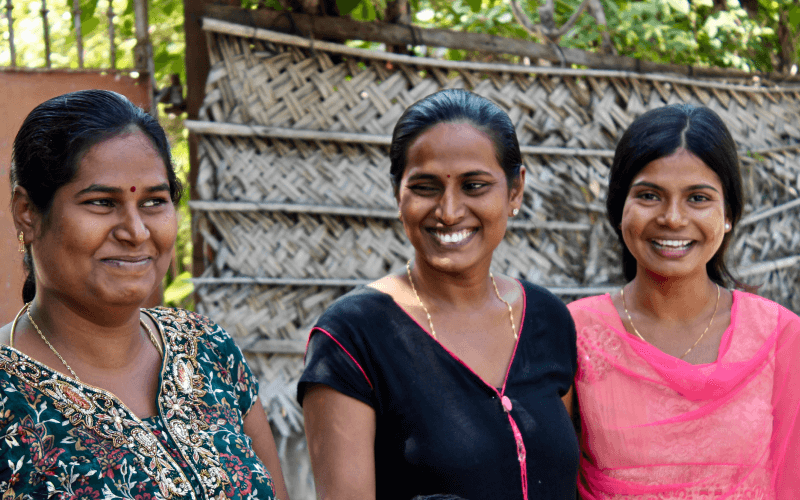
Similarities between Sri Lankan and Indian skin types
Sri Lanka and India are neighboring countries that share similar climates, cultural practices, and physical characteristics. One of these physical characteristics is their skin type. Sri Lankan and Indian skin types share some similarities due to their proximity and similar environmental factors. We will discuss some of the similarities between Sri Lankan and Indian skin types.
- Skin colour: Both Sri Lankans and Indians have a diverse range of skin colours, from fair to dark. This is due to the high levels of melanin in the skin, which is responsible for the pigmentation. The darker the skin, the more melanin it contains. Melanin protects the skin from the harmful UV rays of the sun, which are more intense in the tropical regions.
- Skin texture: Sri Lankan and Indian skin types are generally thicker and oilier than other skin types. This is due to the high humidity levels in these regions, which causes the skin to produce more sebum, the oily substance that lubricates the skin. This can lead to skin problems like acne, blackheads, and whiteheads.
- Skin sensitivity: Both Sri Lankan and Indian skin types can be sensitive to certain skincare products and ingredients. This is due to the high levels of pollution in these regions, which can cause the skin to become more sensitive and reactive. It is important to use gentle, non-irritating skincare products that are suitable for sensitive skin.
- Skin aging: Sri Lankan and Indian skin types are prone to premature aging due to the harsh environmental factors and genetics. The skin can become dull, dry, and develop fine lines and wrinkles. It is important to use anti-aging skincare products that contain ingredients like vitamin C, retinol, and hyaluronic acid.
- Skin concerns: Sri Lankan and Indian skin types are more prone to certain skin concerns like hyperpigmentation, dark circles, and uneven skin tone. This is due to the intense sun exposure, which can cause the skin to produce more melanin, leading to dark spots and discoloration. It is important to use sunscreen and skin brightening products that contain ingredients like kojic acid, niacinamide, and alpha-arbutin.
Differences between Sri Lankan and Indian skin types
Let’s explore the differences between Sri Lankan and Indian skin types.
Skin Types in Sri Lanka
Sri Lanka is a tropical island nation situated in the Indian Ocean. The climate in Sri Lanka is hot and humid, with an average temperature of around 27°C. Due to the warm and humid weather, Sri Lankan skin tends to be oily and prone to acne. The sebaceous glands in the skin produce excess oil, which can clog pores and cause acne breakouts.
In addition, Sri Lankan skin tends to have a yellow undertone, which is attributed to the genetic makeup of the people. This yellow undertone is more prominent in people with darker skin tones.
Sri Lankan skin is also prone to hyperpigmentation, which is the darkening of certain areas of the skin. This is particularly common in people with darker skin tones and can be caused by exposure to sunlight or hormonal changes in the body.
Skin Types in India
India is a vast country with a diverse population, and the skin type of people varies depending on the region and ethnic background. Generally, Indian skin tends to be more sensitive and prone to dryness than Sri Lankan skin. This is because of the cold and dry climate in northern India, which can cause the skin to lose moisture.
Indian skin also tends to have a warm undertone, which is more prominent in people with darker skin tones. This warm undertone can make the skin look yellow or orange.
In conclusion, although Sri Lankan and Indian skin types share some similarities, there are also notable differences between the two. Sri Lankan skin tends to be oily and prone to acne, with a yellow undertone and a tendency towards hyperpigmentation. On the other hand, Indian skin tends to be more sensitive and prone to dryness, with a warm undertone and a tendency towards pigmentation disorders.
Common skin disorders
Skin disorders are a significant public health issue worldwide, affecting individuals of all ages and races. Sri Lanka and India are two neighboring countries with diverse populations and cultural backgrounds, which influence the prevalence of skin disorders in these regions. This article aims to review the most common skin disorders among Sri Lankan and Indian skin types
Acne

Image of an Indian girl with mild acne on her face. The acne appears as small bumps on her skin, particularly on her cheeks, with a reddish tone. There is no visible oozing or liquid coming out of the pimples
Acne is a prevalent skin disease among both Sri Lankan and Indian skin types. It occurs due to the overproduction of sebum, which clogs pores and leads to the formation of pimples, blackheads, and whiteheads.
In Sri Lanka, studies have reported a prevalence of acne ranging from 43% to 78%, with a higher prevalence in adolescents and young adults (1,2). Similarly, in India, the prevalence of acne ranges from 40% to 90%, with a higher prevalence in females (3,4). The prevalence of acne in both countries is attributed to genetic factors, hormonal changes, and environmental factors, such as pollution and stress.
Hyperpigmentation

Image of hyperpigmentation on the hand of an individual with dark brown skin tone, located near the wrist. The affected area appears darker than the surrounding skin and has a patchy, uneven texture
Hyperpigmentation is a condition in which the skin produces more melanin than usual, resulting in dark spots, patches, and uneven skin tone. This condition is particularly common among individuals with darker skin tones.
In Sri Lanka, a study conducted among a sample of 216 patients reported a prevalence of 50.5% for hyperpigmentation, with a higher prevalence among females (5). Similarly, in India, a study conducted among a sample of 1200 patients reported a prevalence of 20% for hyperpigmentation, with a higher prevalence among females and individuals with darker skin tones (6). The prevalence of hyperpigmentation is attributed to genetic factors, sun exposure, and hormonal changes.
Eczema
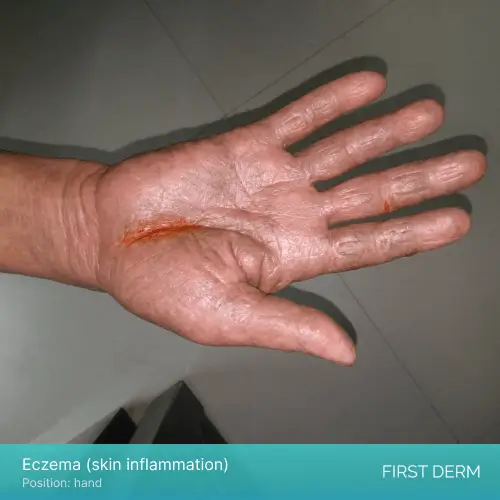
Image of eczema, a form of skin inflammation, on the hand of an individual with dark brown skin tone. The affected area is located along the line of the thenar of the palm and appears red, dry, and scaly. Additionally, there is a reddish patch on one of the fingers near the affected area.
Eczema is a chronic skin disease characterised by dry, itchy, and inflamed skin. It is more prevalent among individuals with dry skin.
In Sri Lanka, a study conducted among a sample of 179 patients reported a prevalence of 18.9% for eczema, with a higher prevalence among children and adolescents (7). Similarly, in India, a study conducted among a sample of 2456 patients reported a prevalence of 4.4% for eczema, with a higher prevalence among females and individuals with a family history of the disease (8). The prevalence of eczema is attributed to genetic factors, environmental factors, such as exposure to allergens and irritants, and lifestyle factors.
Psoriasis

Brown-skinned individual displaying Guttate Psoriasis on their back, characterized by numerous small, scaly and red patches on the skin
Psoriasis is a chronic autoimmune disease that causes red, scaly patches on the skin. It is more common among individuals with a family history of the disease.
In Sri Lanka, a study conducted among a sample of 141 patients reported a prevalence of 0.7% for psoriasis (9). Similarly, in India, a study conducted among a sample of 2456 patients reported a prevalence of 0.5% for psoriasis (8). The prevalence of psoriasis is attributed to genetic factors, environmental factors, such as infections and stress, and lifestyle factors.
Vitiligo
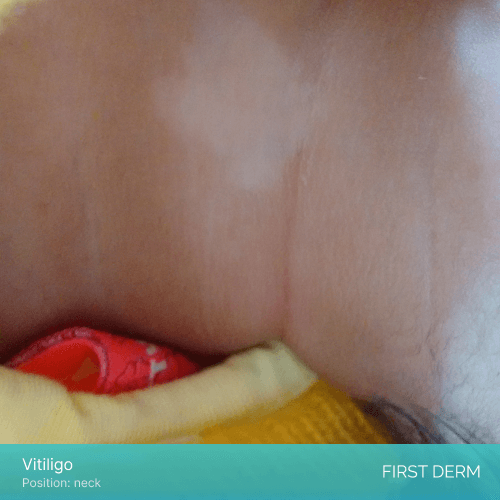
A close-up image of a baby’s neck and head area with patches of Vitiligo, where the affected skin has lost its pigmentation resulting in white or depigmented patches on the baby’s skin
Vitiligo is a skin disorder characterized by the loss of pigmentation, leading to white patches on the skin.
In Sri Lanka, a study conducted among a sample of 289 patients reported a prevalence of 1.7% for vitiligo, with a higher prevalence among females (10). Similarly, in India, a study conducted among a sample of 1200 patients reported a prevalence of 1.7% for vitiligo, with a higher prevalence among females and individuals with a family history of the disease (6). The prevalence of vitiligo is attributed to genetic factors, autoimmune disorders, and environmental factors.
Melasma
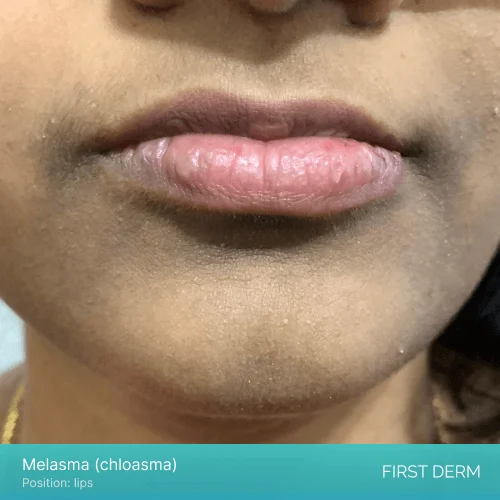
A close-up image of a woman’s lips with Melasma, where the affected skin on the lips appears as brown or gray-brown patch
Melasma is a common skin condition that is characterized by the development of dark, discolored patches on the face, primarily affecting women. Melasma is more common in individuals with darker skin types, including Sri Lankan and Indian skin types, due to increased melanin production.
Studies conducted in Sri Lanka and India have reported a high prevalence of melasma among individuals with darker skin types. One study conducted in Sri Lanka among 136 individuals with melasma found that the majority of patients (74%) had Fitzpatrick skin types IV to VI, indicating darker skin types. Another study conducted among 1211 individuals in India found that the prevalence of melasma was 6.4%, with a higher prevalence among females and individuals with darker skin types.
The exact cause of melasma is not fully understood, but it is believed to be triggered by various factors, including hormonal changes, genetics, sun exposure, and the use of certain medications or cosmetics. Hormonal changes, such as those that occur during pregnancy or with the use of hormonal contraception, are thought to be a significant factor in the development of melasma.
Fungal infections
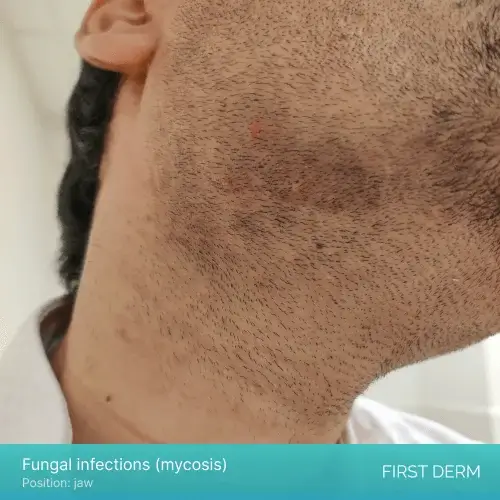
A close-up image of a person’s jaw area with a white skin texture displaying fungal infection (mycosis), characterized by slightly dark patches with red spots that may be scaly and itchy
Fungal infections are a common problem in Sri Lankan and Indian skin types, primarily due to the hot and humid climate and other environmental factors such as poor hygiene practices and the use of occlusive clothing.
Fungal infections of the skin are caused by a group of fungi known as dermatophytes. The most common types of fungal infections in Sri Lankan and Indian skin types are tinea corporis (ringworm), tinea cruris (jock itch), and tinea pedis (athlete’s foot).
Studies conducted in Sri Lanka and India have reported a high prevalence of fungal infections among individuals with darker skin types. In a study conducted in Sri Lanka among 258 patients with skin diseases, fungal infections accounted for 62.5% of cases, with tinea corporis being the most common type . Another study conducted in India among 1000 patients with skin diseases found that fungal infections accounted for 29.6% of cases, with tinea cruris being the most common type.
The risk factors for fungal infections include warm and humid environments, occlusive clothing, poor hygiene practices, and compromised immune systems. The symptoms of fungal infections of the skin may include redness, itching, scaling, and the development of blisters or pustules.
Pityriasis versicolor
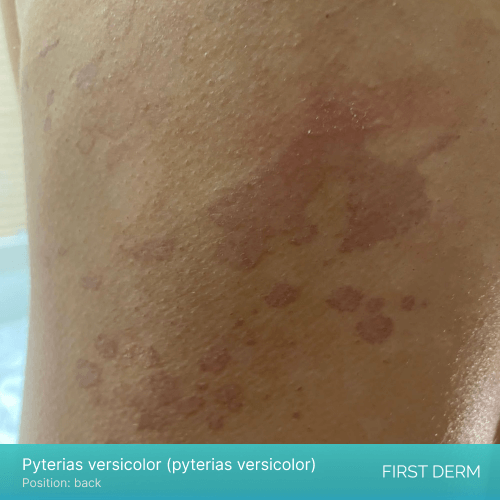
A close-up view of a person’s back showing reddish patches of varying sizes and tones caused by an infection of Pyterias versicolor
Pityriasis versicolor is a fungal skin infection that is caused by the overgrowth of a type of yeast called Malassezia. It typically affects the skin of the trunk, neck, and upper arms, and causes small, scaly, discolored patches that may be lighter or darker than the surrounding skin.
Pityriasis versicolor is more common in regions with warm and humid climates, including India and Sri Lanka. It is estimated that the prevalence of the condition is around 2-8% in the general population in these regions, with higher rates observed in certain subpopulations such as adolescents, young adults, and people who work outdoors.
The condition may be more prevalent in individuals with oily skin or those who live in areas with high humidity. In addition, certain occupations or activities that involve increased sweating, such as farming or sports, may also increase the risk of developing pityriasis versicolor.
The treatment and management of pityriasis versicolor in Indian and Sri Lankan populations is similar to that in other regions. Antifungal medications, such as topical creams or oral medications, are typically used to treat the infection, and good hygiene practices can help prevent recurrence. It is important to consult with a healthcare provider for proper diagnosis and treatment of this condition.
Rosacea
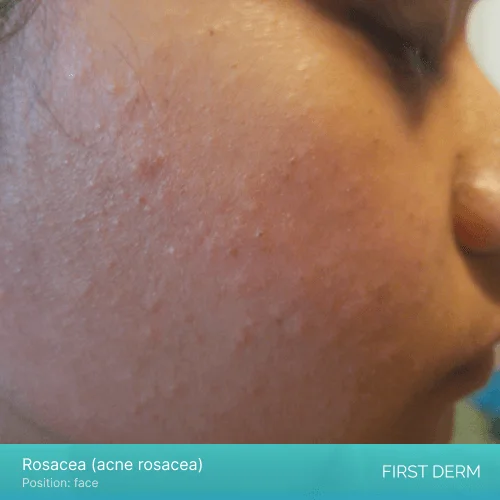
Image of a woman with light brown skin displaying Rosacea on her face. The affected area appears as redness, and small bumps or pimples on the woman’s skin
Rosacea is a chronic skin disorder that affects the face and is characterized by redness, bumps, and pimples. It is more common in individuals with fair skin, but it can also occur in Sri Lankan and Indian skin types.
Studies have reported that the prevalence of rosacea in Sri Lanka is around 1%, and it is more common among women than men. In India, the prevalence of rosacea is estimated to be around 0.9%.
The exact cause of rosacea is not yet known, but it is believed to be related to genetics, environmental factors, and the immune system. Some common triggers of rosacea include sun exposure, hot and spicy foods, alcohol, stress, and certain medications.
Individuals with Sri Lankan and Indian skin types who have rosacea may experience unique symptoms. For example, they may experience hyperpigmentation, which is a darkening of the skin in areas affected by rosacea. This is more common in individuals with darker skin types, and it can make the redness associated with rosacea more noticeable.
Treatment options for rosacea in Sri Lankan and Indian skin types include topical and oral medications, such as antibiotics and anti-inflammatories. Patients may also benefit from avoiding triggers and adopting good skincare practices, such as using gentle cleansers and moisturizers.
Are these diseases unique for Sri Lankan and Indian skin types?
If you come up with a question whether the above-mentioned skin diseases are unique for Sri Lankan and Indian skin types, the answer would be NO.
Some of the common skin diseases in Sri Lankan and Indian skin types are also prevalent in other regions of the world. For example, acne, eczema, fungal infections, psoriasis, and vitiligo are widespread skin diseases that affect people of all skin types and ethnicities.
However, certain skin diseases such as melasma and rosacea are more prevalent among individuals with darker skin types, including Sri Lankan and Indian skin types. Melasma is a condition that is often associated with hormonal changes and sun exposure, which can occur in individuals of all skin types. However, it is more common in individuals with darker skin types because they have more active melanocytes, which produce more pigment and make the skin more prone to hyperpigmentation.
Rosacea, on the other hand, is a condition that is more common in individuals with fair skin, but it can also occur in individuals with darker skin types, including Sri Lankan and Indian skin types. The symptoms of rosacea may be different in individuals with darker skin types, as they may experience hyperpigmentation in addition to redness, bumps, and pimples.
In conclusion, while some skin diseases are more common among individuals with Sri Lankan and Indian skin types, many skin diseases are prevalent in people of all skin types and ethnicities. It is essential to seek early diagnosis and treatment for skin diseases to manage symptoms and prevent complications.
Key takeaway
In conclusion, several common skin disorders affect Sri Lankan and Indian skin types, including acne, eczema, melasma, fungal infections, vitiligo, psoriasis, and rosacea. Early diagnosis and treatment are crucial in managing these skin disorders and preventing their spread. It is essential to adopt good hygiene practices and avoid environmental factors that can contribute to their development and spread.
References:
- Stephanie Nouveau, Divya Agrawal, […], and Chitra Shivan and Nayak, Skin Hyperpigmentation in Indian Population: Insights and Best Practice, cited on 12.3.2023 https://www.ncbi.nlm.nih.gov/pmc/articles/PMC5029232/
- NIH, psoriasis Last Reviewed: September 2020 https://www.niams.nih.gov/health-topics/psoriasis
- Dhoot, Dhiraj & Budamakuntla, Leelavathy & Parasramani, Shrichand & Deshmukh, Gaurav & Barkate, Hanmant. (2020). Acne in Indian population: An epidemiological study evaluating multiple factors. IP Indian Journal of Clinical and Experimental Dermatology. 6. 237-242. 10.18231/j.ijced.2020.048. https://www.researchgate.net/publication/346073719_Acne_in_Indian_population_An_epidemiological_study_evaluating_multiple_factors?_sg=7k2cLtZWR_NuQ4sJelwany_Uu8QMcKUq8hZkxQfwyqx6Diakxi2sm83JaKw65SVJzxjxaivWi5P_b7E
- Chan IL, Cohen S, da Cunha MG, Maluf LC. Characteristics and management of Asian skin. Int J Dermatol. 2019;58(2):131-143. doi:10.1111/ijd.14153 https://pubmed.ncbi.nlm.nih.gov/30039861/
- Gupta, Mrinal. (2020). Quality of life among patients with hand eczema -A Quality of life among patients with hand eczema -A prospective study prospective study. 10.7241/ourd.2020e.37. https://www.researchgate.net/publication/341769210_Quality_of_life_among_patients_with_hand_eczema_-A_Quality_of_life_among_patients_with_hand_eczema_-A_prospective_study_prospective_study
- Bongomin F, Gago S, Oladele RO, Denning DW. Global and Multi-National Prevalence of Fungal Diseases-Estimate Precision. J Fungi (Basel). 2017;3(4):57. Published 2017 Oct 18. doi:10.3390/jof3040057 https://www.ncbi.nlm.nih.gov/pmc/articles/PMC5753159/
- Zhang Y, Cai Y, Shi M, et al. The Prevalence of Vitiligo: A Meta-Analysis. PLoS One. 2016;11(9):e0163806. Published 2016 Sep 27. Doi:10.1371/journal.pone.0163806 https://www.ncbi.nlm.nih.gov/pmc/articles/PMC5038943/
- A study of the prevalence and precipitating factors of pruritus in pityriasis versicolor – PubMed [Internet]. Pubmed.ncbi.nlm.nih.gov [cited March 16, 2023]. Available from: https://www.ncbi.nlm.nih.gov/pmc/articles/PMC4030364/
- Prevalence of different Malassezia species in pityriasis versicolor in central India – PubMed [Internet]. Pubmed.ncbi.nlm.nih.gov [cited March 16, 2023] .Available from: https://pubmed.ncbi.nlm.nih.gov/20228545/
Ask a Dermatologist Now
Anonymous, fast and secure!

The Specialist doctor from the University Hospital in Gothenburg, alumnus UC Berkeley. My doctoral dissertation is about Digital Health and I have published 5 scientific articles in teledermatology and artificial intelligence and others.

